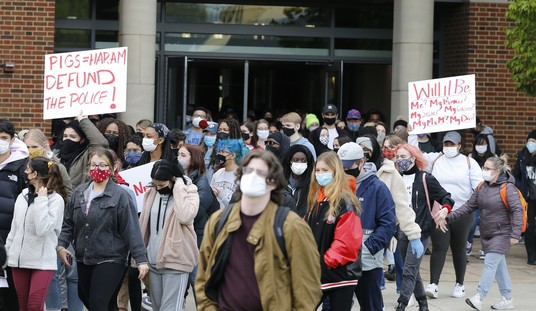
Today, there’s a great deal of controversy surrounding professional football — and honestly, rightly so. The National Football League is under siege from fans for its failure to defend American values, from commentators for the concussion and brain trauma issues now coming to light, and from whichever teams lost last week over the officiating.
Some of the complaints have gone on for years, but today’s RedState Department of History looks back to the days when football was primarily an amateur sport — and to the man who is believed to be the first ever to take money to play the game.
At the turn of the 20th Century, football as a sport seemed to be hanging by a thread. The physicality of the game far outpaced the equipment players were using to protect themselves and players were being seriously injured or killed at an alarming rate. In 1905 alone, at least eighteen people were killed playing football – a number which rose to an estimated 45 players between 1900-05. They died in horrible ways – internal injuries, concussions, broken necks and broken backs to name a few. In those days some players sewed suitcase handles to their uniform shirts so teammates could grab them to create the deadly, and now illegal, “flying wedge” to protect kickoff returners – and for a short time, ball carriers from scrimmage.
The forward pass was not yet legal, and teams had three downs to gain only five yards, so plays from scrimmage often devolved to brutal mobs around the ball. Union College player Harold Moore died in 1905 of a cerebral hemorrhage after being kicked in the head trying to tackle a New York University player (the helmet would not become mandatory until 1939 in the college game.) At this time, a movement sprang up to ban the game but no less a personage than President Theodore Roosevelt convened a 1905 summit to help make the game safer.
But the game still bred heroes. One of those was William “Pudge” Heffelfinger, who on this date in 1892 took $500 to play a game as a professional.
Heffelfinger was born in Minneapolis, and intended to play for his homestate Gophers but was convinced to come to Yale by the legendary Walter Camp instead, where he dominated the college game from 1888-91. He was a quiet man, who was finally persuaded to be more physical on the field by graduate assistant coach Howard Knapp. According to team captain William “Pa” Corbin, Knapp motivated the player in a way we probably wouldn’t think of today:
Finally, at his wits end, Howard decided he would try the sight of blood to stir up Heff’s dormant bellicose spirit. He wrote Heff, with pen dipped in blood which be had obtained from a slaughter house, one of the sharpest, strongest of letters, using every reasonable form of expression to get Heff out of his lethargy. Heff, not knowing the nature of the gore, certainly must have been stirred, for the week after receiving the letter he played the best game of the season against Princeton. Heff found himself that day and from then on was a terror to his opponents.
On this date in 1892, Heffelfinger was paid $500 (about $13,300 today) to play a game for the Allegheny Athletic Association against the Pittsburgh Athletic Club. He recovered a fumble to score the game’s only touchdown in a 4-0 win for his team (touchdowns counted for only four points in those days.)
In those days, playing football for money was frowned upon. The “pure” version of the game was to be found at the college level, and for many years after its formation in 1920, the NFL took a back seat to the college game. It wasn’t until the famous 1958 overtime championship game between the Baltimore Colts and New York Giants that the NFL achieved parity in popularity with college football. In fact, Heffelfinger had refused an earlier offer of $250 to play professionally since he didn’t feel it was enough money to risk his amateur status.
In later life, Heffelfinger coached at Cal-Berkeley, Lehigh, and Minnesota before going into Minnesota Republican Party politics. He served for 24 years on the Hennepin County Board, but made an annual trip to New Haven every year to assist the Yale coaching staff on a volunteer basis. He also continued to play amateur football, playing his last game in 1933 at age 65. He passed away at age 86 in Blessing, Texas, in 1954.
Happy Sunday and enjoy today’s open thread!














Join the conversation as a VIP Member